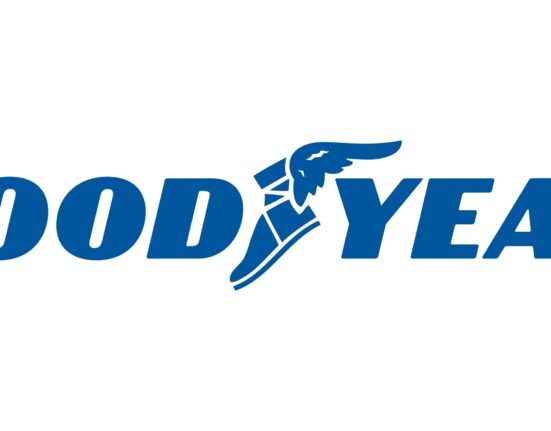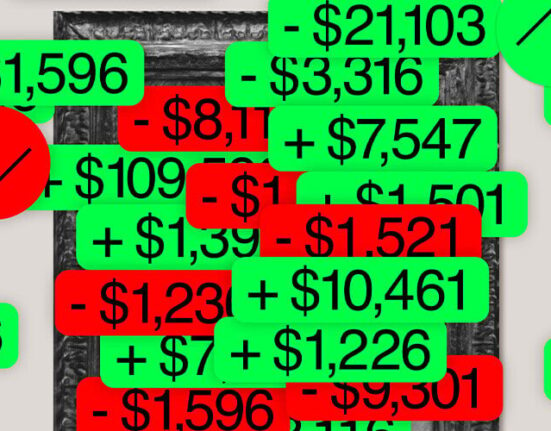Dream Big

If you’ve ever dreamed of joining “the 1%” – the global population that owns 45% of the world’s wealth – while they sip champagne on megayachts and polish their monocles on private jets, we have some good news for you: it’s not impossible.
After all, the world’s most successful investors, like Warren Buffett and Bill Ackman, didn’t start out that way: they learned from the likes of Benjamin Graham before them. So we wager that with a bit more understanding about how the crème de la crème invests, you’ll have a much better shot at sprucing up your own portfolio – as well as protecting it when markets take a dip.
Psst. What’s their secret?
On the face of it, the lifestyles of the rich and famous might as well be a million miles (or, er, dollars) away. But here’s the thing: the 1%ers tend to invest much the same way as you might – in plain old stocks and bonds. Some might just be good at picking more (or bigger) winners, and some might even get lucky.
Still, there is something that sets them apart from the ordinary investor: the “alternative” investments like real estate, fine art, and private equity that make up the rest of their portfolio. Up to now, these markets have been pretty closed off to all but the uber-rich, who’ve kept the big gains for themselves. But with the rise of challenger fintech platforms and the broadening of investment managers’ horizons, investments like these are more and more accessible to the 99%ers.
So there are companies giving you a way in, and that’s a good start. But why exactly these markets are so popular among the upper crust – and how you can make the most of them – is something we’ll go on to explore in this guide. Hold on to your top hat – we’re going for a spin.
I Got 99(%) Problems
Take a typical 30-year-old investor: their investment portfolio might be 60% invested in stocks, which are typically high risk – since their values can both rise and fall dramatically – and don’t offer any guaranteed income (though some try to with a regular dividend). The remaining 40% of their portfolio might be in bonds, the safest of which are issued by major governments that can (if necessary) print extra money to keep up interest payments, as well as repay the debt in full when it’s due.

Source: American Association of Individual Investors Asset Allocation Survey
That sort of diversification suits most investors to a tee: the idea being that any losses from, say, stocks, are offset by gains from bonds. And history’s shown that with regular “rebalancing” – investing the profit from your winners back into your losers – you’d likely do pretty well over the long term.
But the average 1%er (if you’ll excuse the contradiction in terms) invests differently. Sure, they’ll have some run-of-the-mill stocks and bonds, but what sets them apart are their investments in a wide variety of “alternative” markets: real estate, collectible artworks, and typically high-risk hedge funds, private equity, venture capital and so on.

Source: DiversyFund
What’s your point?
There’s a golden rule when it comes to investing: “allocation, allocation, allocation”. That’s the way you split your cash between stocks, bonds, and, yup, alternatives. The most common recommendation, according to DiversyFund, is to invest around a fifth of your portfolio in alternatives – though that might vary depending on your individual circumstances.
Diversification beyond just stocks and bonds can help your portfolio weather a major market downturn ⛈ In late 2018, for example, the value of most publicly listed investments fell, so investors whose cash was passively tracking the value of stocks and bonds probably saw their nest eggs shrink. But investors with alternatives in their portfolio might’ve fared better. The value of real estate and fine art doesn’t tend to fluctuate with the broader goings-on of financial markets, and that might’ve helped protect investors’ wealth – and their 1% status.
Investing in alternatives used to be an exclusive club with a pricey entrance fee. But nowadays we’re all invited – and for a much lower cost. That’s partly thanks to the fintechs that are ushering you into the party through the side door, as well as the traditional investment managers who have become much more forgiving doormen if you’re wearing the wrong shoes.
So now you’ve seen why alternative investments are so popular, let’s take a closer look at how they work – starting with one of the biggest. Step through the door for more.
Keeping It Real… Estate
Real estate is one of the biggest groups of alternative investments, since it gives investors both real-world benefits and comparatively fewer risks.
Property tends to be seen as a “slow and stable” investment because it isn’t directly traded on an exchange (even if property-owning companies’ stocks can be). That helps insulate it from daily price swings. Case in point: the value of US commercial real estate (i.e. offices and shops) stayed pretty stable in 2018, and investment in the sector rose by 15%. Meanwhile, US residential real estate (i.e. houses and apartments) prices increased by around 5% on average, including in all 20 major US cities.

It’s no secret that the value of land in the US – and, by extension, real estate – has increased over time. For example, since December 2008 (at perhaps the lowest point of the global financial crisis) US house prices have risen about 34% on average – and doubled in San Francisco. That still pales in comparison to the US stock market’s 300% rise over the same time, but its investors likely took on much greater risk.
Note that in the above chart, we haven’t included income some homeowners would’ve generated from renting out their properties. But to be fair, we’ve also shown only the change in the price of S&P 500 stocks – and not included the additional return investors would’ve received from dividends.
So how do the 1% invest in real estate?
When you think of real estate investing, you probably think of the “traditional” kind: buying a property to rent out or sell on for a profit at a later date. But there are a few other ways the 1% invest in real estate which won’t require you to commit your cash to a big down payment.
Buying via the stock market
Real estate investment trusts, or REITs, were established in the US back in 1960 to provide an easier way for people to invest in real estate. Many are listed on the stock market, and they’re required to distribute 90% of their taxable income to investors as dividends. And because tenants’ leases are often agreed for years ahead, they’re a particularly reliable form of income – and an attractive investment.
There are two main types of REIT to be aware of. “Equity REITs” are what you might expect: companies buy properties, fill them with tenants, and collect rental income. “Mortgage REITs”, however, use their cash to buy or issue mortgages on properties, and then collect income in the form of monthly interest payments from borrowers.
Whichever REIT takes your fancy, one thing to keep in mind is that they’re still stocks. So while publicly listed REITs may diversify your portfolio, their values may also move in sync with stock markets day to day. Still, REITs have historically provided stronger returns than owning real estate directly – perhaps because they typically spread their risk across multiple properties in various markets. And there are steps you can take to limit the impact of a broader downturn too, such as investing in REITs that are focused on multi-family homes.️
Buying via private funds
Investors who prefer to avoid the stock market altogether might look to a private real estate fund, which involves pooling your money with other investors’ to put towards a property. It’s managed by a team that charges investors a fee (and often a portion of any profit) for the privilege. Investors in real estate funds typically agree to tie their money up for a set amount of time, so this option offers less “liquidity” than if they’d invested in, say, a publicly-traded REIT, which lets investors buy and sell shares at will.
Funds like these aren’t very accessible to the average investor, with large minimum investments keeping all but the wealthiest of individuals from taking part. But if you thought the 1%ers are having all the fun, you’d be happily mistaken…
Crowdfunding and lending
A number of fintech platforms have popped up in the last few years looking to open up real estate investing to ordinary investors. Their services can generally be split into two main types:
Real estate crowdfunding lets investors purchase a fractional share of a property alongside other investors. Just as with stocks, investors who own a share of a property stand to make a profit when values rise over a long period – as well as a share of the rental income (a bit like a stock’s dividend). Of course, ownership also carries the risk of losses if property values drop.
Real estate lending allows investors to club together and loan cash to a person or company, secured against a property owned by the borrower. Investors who make real estate-backed loans pass up on the potential for windfall gains, but gain access to predictable returns over shorter periods – whether house prices rise or fall. And if the borrower defaults, the property can be sold to pay you back.
Many of the investment platforms offering these services make accessibility and affordability the number-one priority, in an effort to distinguish themselves from more traditional options. So rather than the tens of thousands you’d normally need to join a private property fund or buy a home outright, you can invest with as little as $500. These platforms also cater to different risk appetites: some let risk-comfortable investors buy into individual properties, while others offer investments spread across several properties.
Still, they’re often aimed at relatively experienced property investors and might not suit the average person – so be sure to do your homework. And, just like with private funds, you may have to agree to tie up your investment for a more substantial period of time than you would if you were investing in stocks and bonds.
Of course, if that puts you off, there are plenty of other alternatives out there which might take your fancy…
Fine Art, Hedge Funds, and Private Equity

Arty farty or arty smarty?
Heading down to your local crafts store and buying a canvas, some paints, and an easel is one way to invest in art – but that’s not the way 1%ers do it.
While collectors can’t trade paintings or sculptures like a stock or bond, art is an asset class in its own right. According to Deloitte’s 2017 Art & Finance Report, art investment in the US alone is expected to reach $2.7 trillion by 2026, and 55% of wealth managers reported their clients were asking for advice on investing in art and collectibles. And those that do stand to benefit from some picturesque gains…

Between 2000 and 2018, the value of the top artworks (tracked by the Artprice 100 index) rose by an average of 9% every year, while the US stock market rose an average of just 3%. And even though the number of major art sales began falling months after the onset of the 2008 global financial crisis, art’s value didn’t fall as much as stocks’ did during the downturn. In fact, research shows there isn’t much correlation at all between the price of high-end artworks and the stock market.
That’s because when the economy’s looking healthy, art might change hands frequently: there’s high “liquidity”. But unlike stock market investors who often race to sell their assets when things head south, owners of expensive artworks (who tend to be pretty well off) don’t usually resort to desperately flogging their Rembrandts and Warhols for whatever they can get. Instead, they hang onto them until the market becomes more favorable for selling, keeping prices relatively stable.
But art investment isn’t easy to get into: investors would need to make their way to some pretty exclusive auction houses and shell out big bucks to get in on the action. That’s why the 1% have tended to have a monopoly on it. Fortunately, there are now investment platforms that allow investors who aren’t filthy rich to own a share of an artwork, from as little as a few hundred dollars. Some of these platforms buy the artwork themselves, then create and list shares that other investors can buy. Others don’t buy the art directly, but connect investors with owners who might want to sell a portion of an artwork.
But there are some rogue brushstrokes that might spoil this pretty picture for you. For one, the success of your investment depends heavily on the specific piece of art. If trends change and no one’s interested in your choice, it won’t sell – no matter the general direction of the market. Counterfeits are a concern for many art investors too: a bogus piece is nearly worthless, for obvious reasons. And, as with all assets, investors are subject to market fluctuations – for better or worse.
Private equity and hedge funds
In reality, an alternative investment could be anything from a rare pair of sneakers to a cryptocurrency. But if you really want to invest like the 1%, you’ll probably want to include private equity and hedge funds in your portfolio…
Private equity firms invest in private companies – or take public companies private by buying them out – with money they’ve themselves raised from investors. Over time, they’re aiming to grow the profits of the businesses they acquire and eventually sell those businesses on, bagging a profit for their own investors on top of any dividends accrued along the way.
Hedge funds, meanwhile, are pooled investment funds that invest across the spectrum of stocks, bonds, currencies, commodities, and “derivatives” (like options and futures). The hope is that it’ll give them a better chance of generating a profit for investors whether markets rise or fall. For example, a hedge fund might bet Amazon’s stock will rise and “short” the rest of the companies it’s usually grouped with (its index). That way it’ll make money if Amazon’s stock price increases, and benefit if those other stocks fall, too.
In a rising market – such as the US’s in the decade leading up to 2020 – hedge fund returns haven’t been all that impressive on average. But in a downturn, they come into their own, helping wealthy investors cushion potential losses elsewhere.
Problem is, hedge funds and private equity tend to be pretty risky and therefore require their investors to be “accredited” – not just knowledgeable about financial markets, but rich enough to take on the risk. In the US that means having either a $200,000 salary or assets of at least $1 million. But things might be changing…
Fake It Till You Make It

Now you’re all caught up, you’re perfectly placed to start building a portfolio the other 99%ers will look at with envy.
To recap:
- What’s the 1%’s secret? The short answer is diversification. The long answer: di-ver-si-fi-ca-tion – beyond just stocks and bonds, and into alternative investments like real estate, art, and private equity.
- The first step is assessing the asset allocation of your investment portfolio. The 1% have a significant chunk of their wealth in alternatives, so think about whether you’re able to diversify more and how you might go about it.
- Real estate is a major part of alternative investing. There are several ways to approach it – from REITs to crowdfunding – and they’re becoming more accessible to investors who don’t have cash coming out of their ears.
- Look out for investments that won’t be hit by a broad economic downturn. Assets like fine art or hedge funds are risky, but they also aim to be less correlated to major financial markets than other investments.







